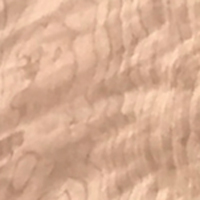Cherry, Curly
Cherry (Prunus serotina) is sawn from the Black Cherry tree which has a wide distribution from eastern Canada through the eastern half of the United States and as far south as the Gulf of Mexico. Although cherry does grow in New Hampshire (and we saw local cherry in our mill as Native Cherry) most lumber is taken from Appalachia as the trees thrive in this area. Northern cherry trees tend to be much smaller than those from the Appalachians where they can be 100 feet in height and 4 to 5 feet in diameter.
The heartwood varies in color from a light to dark reddish brown that deepens with exposure over time. The sapwood is nearly white and is narrow in old growth trees, but much wider in second-growth trees. Cherry machines very well and is prized for its distinctive and attractive luster.. The wood has a mild, aromatic scent, but no characteristic taste. It is of medium density, firm, and strong, with a fine, uniform texture. The grain is generally straight. Although there is much shrinkage in the drying process, it is generally very dimensionally stable once dry. Wooden clock gears were often manufactured from cherry because of this stability.
Figured cherry, or curly cherry, has a patterning similar to that found in curly or flame birch. It is a wide, softly swirling curl that catches the light in wide gleaming swaths across the wood. It is much more open and less tight than the figuring in curly (tiger, fiddleback) maple.
Cherry is used for furniture, fine veneers, and architectural woodwork.
Please give us a call at 603-798-5135
or email us if you have questions!
| Measure | Grade | Finish | Price |
|---|---|---|---|
| 4/4-16/4 | CURLY | RGH - ADD ON | $2.50 |
*All types of wood dust that are inhaled are hazardous to your health and have the potential to cause allergic reactions in sensitive people. Please wear the proper personal protective equipment when working with any type of wood.*
For more information about this species, please visit The Wood Database.




